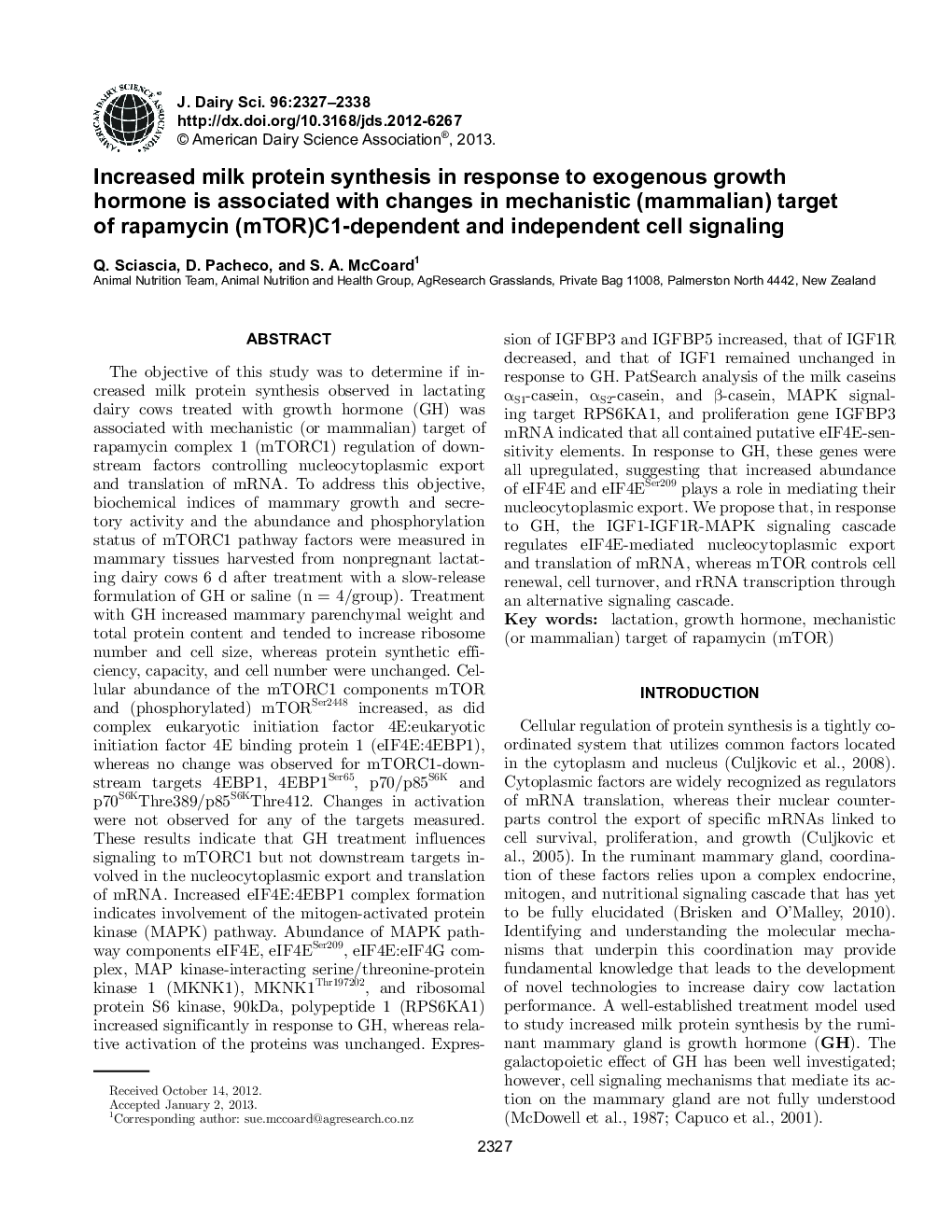| Article ID | Journal | Published Year | Pages | File Type |
|---|---|---|---|---|
| 10979034 | Journal of Dairy Science | 2013 | 12 Pages |
Abstract
The objective of this study was to determine if increased milk protein synthesis observed in lactating dairy cows treated with growth hormone (GH) was associated with mechanistic (or mammalian) target of rapamycin complex 1 (mTORC1) regulation of downstream factors controlling nucleocytoplasmic export and translation of mRNA. To address this objective, biochemical indices of mammary growth and secretory activity and the abundance and phosphorylation status of mTORC1 pathway factors were measured in mammary tissues harvested from nonpregnant lactating dairy cows 6 d after treatment with a slow-release formulation of GH or saline (n = 4/group). Treatment with GH increased mammary parenchymal weight and total protein content and tended to increase ribosome number and cell size, whereas protein synthetic efficiency, capacity, and cell number were unchanged. Cellular abundance of the mTORC1 components mTOR and (phosphorylated) mTORSer2448 increased, as did complex eukaryotic initiation factor 4E:eukaryotic initiation factor 4E binding protein 1 (eIF4E:4EBP1), whereas no change was observed for mTORC1-downstream targets 4EBP1, 4EBP1Ser65, p70/p85S6K and p70S6KThre389/p85S6KThre412. Changes in activation were not observed for any of the targets measured. These results indicate that GH treatment influences signaling to mTORC1 but not downstream targets involved in the nucleocytoplasmic export and translation of mRNA. Increased eIF4E:4EBP1 complex formation indicates involvement of the mitogen-activated protein kinase (MAPK) pathway. Abundance of MAPK pathway components eIF4E, eIF4ESer209, eIF4E:eIF4G complex, MAP kinase-interacting serine/threonine-protein kinase 1 (MKNK1), MKNK1Thr197202, and ribosomal protein S6 kinase, 90kDa, polypeptide 1 (RPS6KA1) increased significantly in response to GH, whereas relative activation of the proteins was unchanged. Expression of IGFBP3 and IGFBP5 increased, that of IGF1R decreased, and that of IGF1 remained unchanged in response to GH. PatSearch analysis of the milk caseins αS1-casein, αS2-casein, and β-casein, MAPK signaling target RPS6KA1, and proliferation gene IGFBP3 mRNA indicated that all contained putative eIF4E-sensitivity elements. In response to GH, these genes were all upregulated, suggesting that increased abundance of eIF4E and eIF4ESer209 plays a role in mediating their nucleocytoplasmic export. We propose that, in response to GH, the IGF1-IGF1R-MAPK signaling cascade regulates eIF4E-mediated nucleocytoplasmic export and translation of mRNA, whereas mTOR controls cell renewal, cell turnover, and rRNA transcription through an alternative signaling cascade.
Keywords
Related Topics
Life Sciences
Agricultural and Biological Sciences
Animal Science and Zoology
Authors
Q. Sciascia, D. Pacheco, S.A. McCoard,
